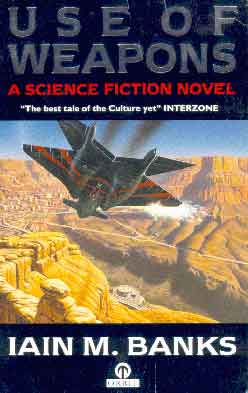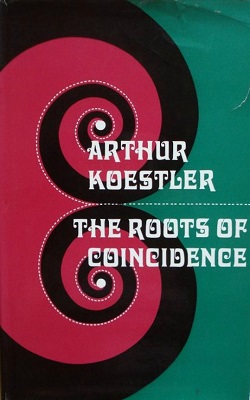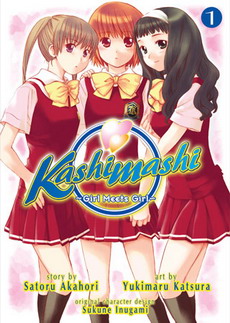
Use of Weapons is a science fiction novel by Scottish writer Iain M. Banks, first published in 1990. It is the third novel in the Culture series.

Gravity's Rainbow is a 1973 novel by American writer Thomas Pynchon. The narrative is set primarily in Europe at the end of World War II and centers on the design, production and dispatch of V-2 rockets by the German military. In particular, it features the quest undertaken by several characters to uncover the secret of a mysterious device, the Schwarzgerät, which is slated to be installed in a rocket with the serial number "00000".
A holon is something that is simultaneously a whole in and of itself, as well as a part of a larger whole. In other words, holons can be understood as the constituent part–wholes of a hierarchy. Holons are sometimes discussed in the context of self-organizing holarchic open (SOHO) systems.

Kanon is a Japanese visual novel developed by Key, a brand of Visual Arts. It was released on June 4, 1999, for Windows as an adult game. Key later released versions of Kanon without the erotic content, and the game was ported to the Dreamcast, PlayStation 2, PlayStation Portable and Nintendo Switch. The story follows the life of Yuichi Aizawa, a high school student who returns to a city he last visited seven years prior, and he has little recollection of the events from back then. He meets several girls and slowly regains his lost memories. The gameplay in Kanon follows a branching plot line which offers pre-determined scenarios with courses of interaction, and focuses on the appeal of the five female main characters by the player character. The game once ranked as the second best-selling PC game sold in Japan, and charted in the national top 50 several more times afterwards. Kanon has sold over 300,000 units across several platforms.

In literature, an epigraph is a phrase, quotation, or poem that is set at the beginning of a document, monograph or section thereof. The epigraph may serve as a preface to the work; as a summary; as a counter-example; or as a link from the work to a wider literary canon, with the purpose of either inviting comparison or enlisting a conventional context.

Darkness at Noon is a novel by Hungarian-born novelist Arthur Koestler, first published in 1940. His best known work, it is the tale of Rubashov, an Old Bolshevik who is arrested, imprisoned, and tried for treason against the government that he helped to create.

The Sleepwalkers: A History of Man's Changing Vision of the Universe is a 1959 book by Arthur Koestler. It traces the history of Western cosmology from ancient Mesopotamia to Isaac Newton. He suggests that discoveries in science arise through a process akin to sleepwalking. Not that they arise by chance, but rather that scientists are neither fully aware of what guides their research, nor are they fully aware of the implications of what they discover.

Dying Inside is a science fiction novel by American writer Robert Silverberg. It was nominated for the Nebula Award in 1972, and both the Hugo and Locus Awards in 1973.

An epilogue or epilog is a piece of writing at the end of a work of literature, usually used to bring closure to the work. It is presented from the perspective of within the story. When the author steps in and speaks directly to the reader, that is more properly considered an afterword. The opposite is a prologue—a piece of writing at the beginning of a work of literature or drama, usually used to open the story and capture interest. Some genres, for example television programs and video games, call the epilogue an "outro" patterned on the use of "intro" for "introduction".
Jungle Action is the name of two American comic book series published by Marvel Comics and its 1950s precursor, Atlas Comics. The Marvel version contained the first series starring the Black Panther, the first black superhero in mainstream comics, created by the writer/artist team of Stan Lee and Jack Kirby in Fantastic Four #52.

The Roots of Coincidence is a 1972 book by Arthur Koestler. It is an introduction to theories of parapsychology, including extrasensory perception and psychokinesis. Koestler postulates links between modern physics, their interaction with time and paranormal phenomena. It is influenced by Carl Jung's concept of synchronicity and the seriality of Paul Kammerer.

Kashimashi: Girl Meets Girl is a Japanese yuri manga series written by Satoru Akahori and illustrated by Yukimaru Katsura. The manga was originally serialized in Dengeki Daioh between the July 2004 and May 2007 issues, and later published in five bound volumes by MediaWorks from January 2005 to May 2007. The story focuses on Hazumu Osaragi, a normal, albeit effeminate high school boy who is killed when an alien spaceship crash lands on him, only to be restored to health as a girl. This results in a same-sex love triangle that Hazumu finds herself in with two of her best female friends.

The Sky Crawlers is a Japanese novel series by Hiroshi Mori. First published by Chuōkōron-shinsha in June 2001 and spanning six books, it follows the journeys and tribulations of a group of young fighter pilots involved in dogfight warfare, and is set during an alternate historical period. The series is unlike other works by Mori, noted for his series of mystery novels. The series is illustrated by manga artist Kenji Tsuruta. The series was adapted into an animated film, a video game and a manga series.

Arthur Koestler, was a Hungarian-born author and journalist. Koestler was born in Budapest and, apart from his early school years, was educated in Austria. In 1931, Koestler joined the Communist Party of Germany, but he resigned in 1938 after becoming disillusioned with Stalinism.

The Heel of Achilles: Essays 1968–1973 is a book by Arthur Koestler. It is a collection of writings, lectures, addresses, book reviews, newspaper articles, etc.

Arthur Koestler is a book by Mark Levene about the life and work of Hungarian-British writer Arthur Koestler. The book was in published in 1984, one year after Koestler's suicide. The book is divided into seven main chapters, of which the first of is a biography and the other six critical essays on each of Koestler's six novels, his stories and his play Twilight Bar.
Homestuck is an Internet fiction webcomic series created by American author and artist Andrew Hussie. The fourth and best-known of Hussie's four MS Paint Adventures, it originally ran from April 13, 2009 to April 13, 2016. Though normally described as a webcomic, and partly constituted by a series of single panel pages, Homestuck also relied heavily on Flash animations and instant message logs to convey its story, along with occasional use of browser games.

Conan at the Demon's Gate is a fantasy novel by American writer Roland Green, featuring Robert E. Howard's sword and sorcery hero Conan the Barbarian. It was first published in trade paperback by Tor Books in November 1994; a regular paperback edition followed from the same publisher in August 1996.
The Expanse is a series of science fiction novels by James S. A. Corey, the joint pen name of authors Daniel Abraham and Ty Franck. The first novel, Leviathan Wakes, was nominated for the Hugo Award for Best Novel in 2012. The complete series was nominated for the Hugo Award for Best Series in 2017. It later won, following its second nomination for the same award in 2020.















